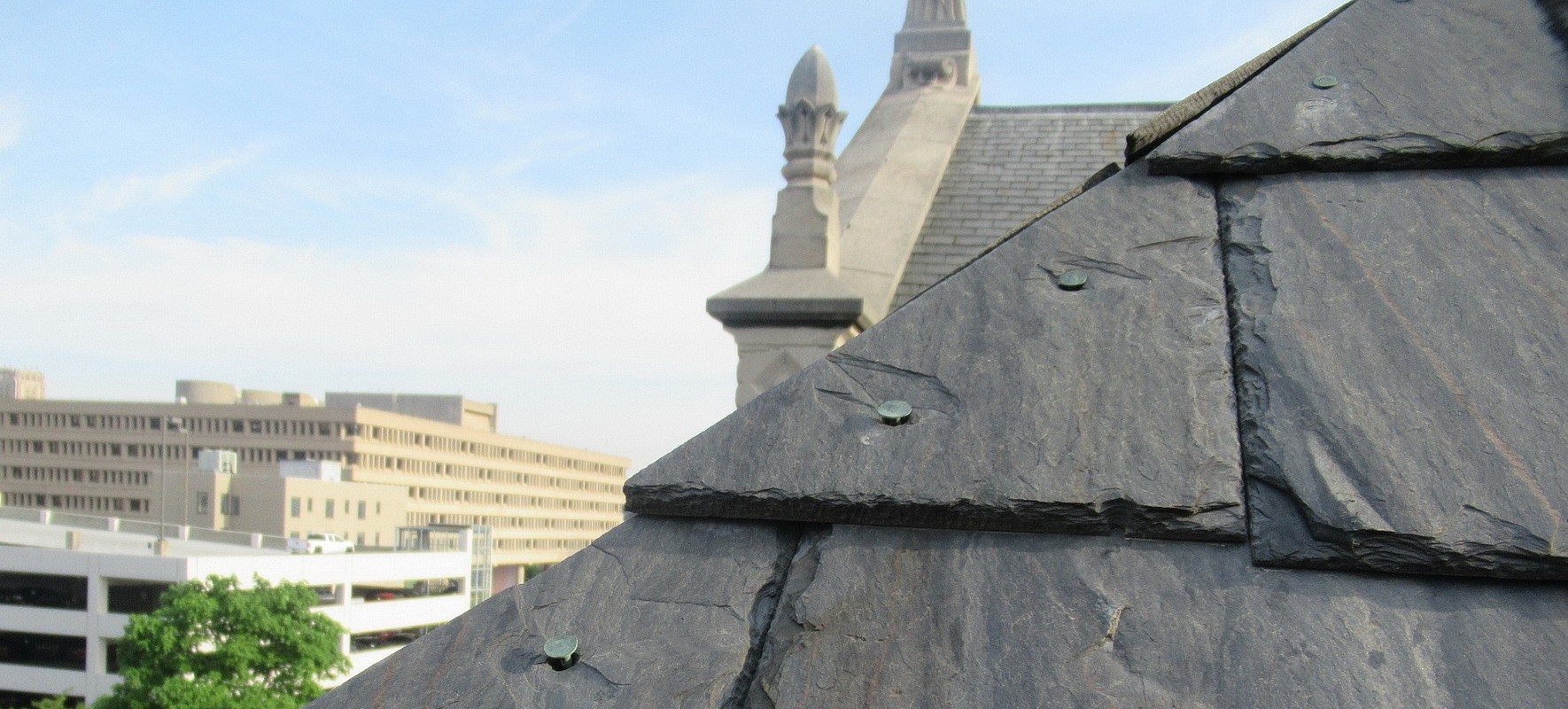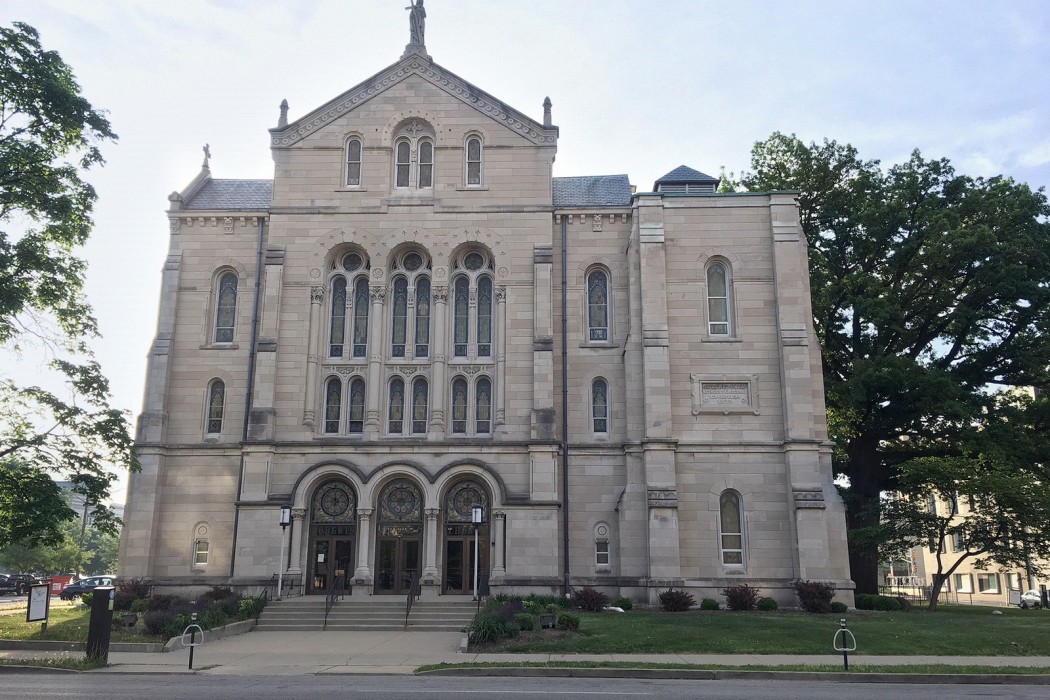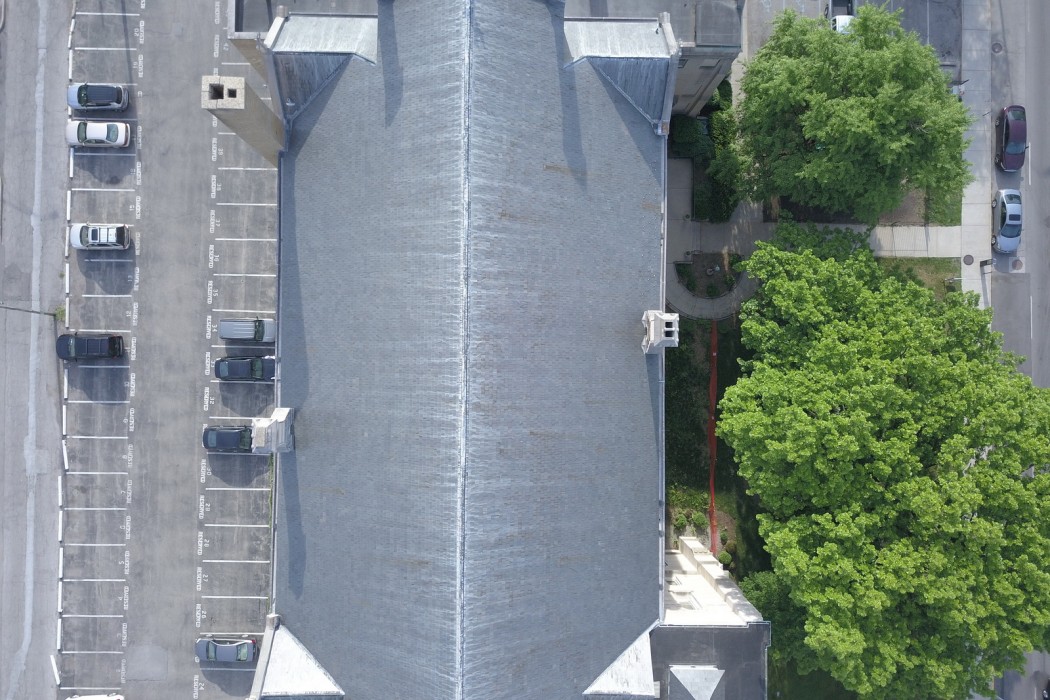WJE PROJECTS
Roberts Park United Methodist Church


CLIENT |
Roberts Park United Methodist Church |
LOCATION |
Indianapolis, IN |
Roof Insurance Claim Consulting
Roberts Park United Methodist Church made an insurance claim for possible wind damage after a number of fallen slate roof tiles were found on the grounds. The insurer of the property performed an investigation and concluded that the damage was not related to wind. Rather, the slate tile roofing was not installed adequately, with insufficient nail lengths. Subsequently, the insurer concluded that the roofing system was not insurable. The Church then retained WJE to review previous investigation reports and independently assess the roofing system.
BACKGROUND
Designed by Diedrich A. Bohlen in 1873, Roberts Park United Methodist Church consists of limestone-clad multi-wythe mass masonry walls. The roof on the Church consists of slate shingles. In 1996, the roofing was replaced with a new slate roofing system consisting of Vermont grey slates. The slates are attached to the decking with copper nails and finished with copper flashing and lead-coated copper gutter liners.
SOLUTION
WJE’s independent evaluation of the roofing system consisted of reviewing previous design documents and investigation reports as well as a site visit to document the existing condition of the roofing slate tile. WJE also utilized an unmanned aircraft system (UAS) to photographically survey the roof and supplement WJE’s visual observations. WJE measured the lengths of the slate tile nails and quantified the number of failed slate tiles. Contrary to previous investigation reports, the nail lengths of the slate tile roofing were sufficient based on industry guidelines and currently adopted building code requirements.
The percentage of broken, missing, or displaced tiles observed was approximately 0.25 percent over the twenty-two-year life of the roof—significantly less than the expected failure rate commonly expected of slate tile roofing systems—1 percent in two years. The quantified percentage of failed tiles was well within the tolerance for what would typically be expected of a slate roof of this age and installation. The cause of the broken, missing, or displaced slate shingles was largely related to natural defects in the slate material, which are expected. As such, the conditions observed were consistent with maintenance items, as opposed to installation-related deficiencies. WJE provided conclusions to the Church to pursue insurance options for the roofing system of the building.
RELATED INFORMATION
-
 Clients turn to us when they need a firm that fully understands the aesthetic and functional... MORE >Services | Building Enclosures
Clients turn to us when they need a firm that fully understands the aesthetic and functional... MORE >Services | Building Enclosures -
 We employ our industrial rope access team or drone capabilities to provide clients a solution to... MORE >Services | Difficult Access and Drone Survey
We employ our industrial rope access team or drone capabilities to provide clients a solution to... MORE >Services | Difficult Access and Drone Survey -
 Clients rely on us to provide expert assistance for resolving claims and disputes arising from... MORE >Services | Litigation Consulting
Clients rely on us to provide expert assistance for resolving claims and disputes arising from... MORE >Services | Litigation Consulting






































